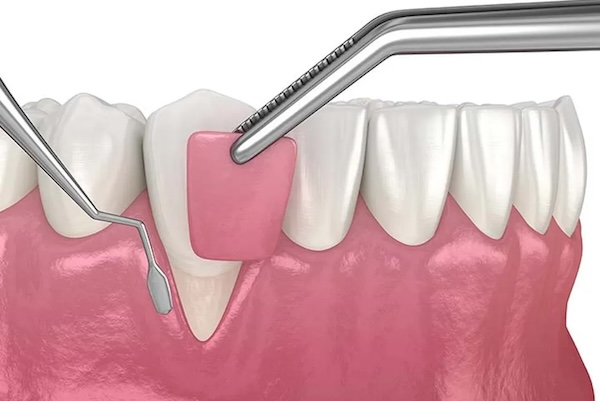
Gum recession is a problem affecting millions of Americans. Fortunately, with diagnosis and treatment, you can catch it early and prevent it from getting worse. At Impressive Dental Care in the Bay Ridge neighborhood of Brooklyn, New York, Lea Planzos, DMD, MS, Penny Planzos, DMD, MS, and Thomas Planzos, DMD, provide complete care for gum recession. Advanced treatments like laser dentistry can stop gum disease from spreading and transform your smile. To make an appointment, call the office today or book online.
What is gum recession?
Gum recession happens when your gum tissue pulls back, exposing more of your teeth and roots. Often, the recession is a result of gum disease.
When plaque –– a thin film of food particles, bacteria, and saliva –– collects around the base of your teeth, it irritates your gums. Over time, that causes them to swell, bleed, and recede.
Gum recession happens slowly. Early diagnosis and treatment can prevent gum disease from getting worse, preserving your teeth and smile for years to come.
What causes gum recession?
Gum recession happens for many reasons, including:
- Gum disease
- Genetics
- Aggressive tooth brushing
- Poor dental hygiene
- Hormonal changes
- Teeth grinding
- Jaw clenching
- Misaligned bite
- Tobacco use
You might also experience gum recession if you have a piercing in your lip or tongue. Depending on the piercing, jewelry can rub against your gums, causing the tissue to wear away.
How is gum recession diagnosed?
Your Impressive Dental Care provider reviews your dental records and asks about your symptoms to diagnose gum recession. They then conduct an oral exam and take oral X-rays. After assessing your gums, your provider makes treatment recommendations.
How is gum recession treated?
Impressive Dental Care offers several treatments for gum recession, including:
Scaling and root planing
If you have gingivitis (a mild form of gum disease), your provider might recommend scaling and root planing. Your dentist carefully removes plaque from your teeth and beneath your gums. They then smooth out the base of your teeth, allowing your gums to reattach.
Soft-tissue graft surgery
If you have a more severe infection like periodontitis, your provider might recommend soft-tissue graft surgery. Your dentist removes a healthy piece of tissue from the roof of your mouth. The dentist sutures it over your receding gum tissue, restoring your gumline to its near-original appearance.
Bone grafting
If you have severe gum disease and it results in bone loss, your provider might recommend a bone graft. Your dentist inserts a piece of natural or synthetic bone material into your jaw. Over time, the graft encourages the production of new, healthy bone tissue.
To learn more about the treatments for gum recession, make an appointment today at Impressive Dental Care by calling the office or booking online.
